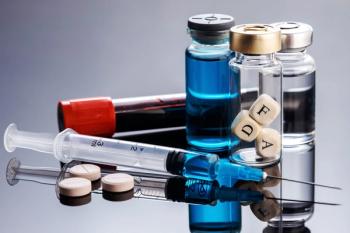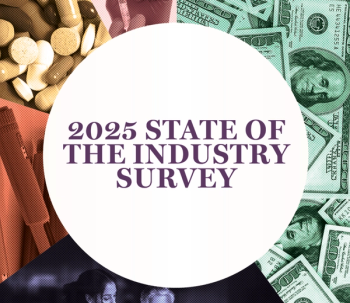
Irritable bowel syndrome therapeutics market dynamics
Currently, the IBS treatment market is naïve and underpenetrated, with only 4 products indicated for IBS in the 7MM.
Koutsokeras
Irritable bowel syndrome (IBS) is defined as recurrent abdominal pain or discomfort that occurs in association with altered bowel habits over a period of at least 3 months. The disorder is classified into three main subtypes, according to the predominant bowel habits presented: constipation-predominant IBS (IBS-C), diarrhea-predominant IBS (IBS-D), and mixed-presentation IBS (IBS-M). IBS is among the most common gastrointestinal disorders, with an estimated pooled international IBS prevalence rate of about 11.2%. GlobalData estimates that there were approximately 36.1 million men and women older than age 19 years who suffered with IBS in the 7 major pharmaceutical markets (7MM: United States. France, Germany, Italy, Spain, United Kingdom, Japan) in 2014.1
Currently, the IBS treatment market is naïve and underpenetrated, with only 4 products indicated for IBS in the 7MM. These include the IBS-C therapies, Amitiza (lubiprostone,
Amitiza initially gained approval for IBS in the US in 2008. It is indicated only for the treatment of women with IBS-C at an oral dose of 8 µg taken twice daily. Amitiza is available in Japan and only in the UK in the 5EU region (France, Germany, Italy, Spain, UK), but it is not indicated for IBS in these markets. In 2012, Linzess was the first product to become available for treating IBS-C in both men and women; it has a recommended oral dose of 290 µg taken once daily. Linzess is available in the United States and 5EU, and it is currently in phase 3 of development in Japan. Amitiza and Linzess directly compete for women with IBS-C in the US, but Linzess is free from direct competition in the 5EU and Japan. Both products are used as second-line treatments and beyond in patients who have not responded to first-line antispasmodics and laxatives.
Linzess is less widely covered by private health insurance plans in the United States when compared with Amitiza. This is mainly due to
Lotronex is available for the treatment of women with IBS-D only in the United States. Lotronex is a potent therapy for IBS-D and does not face any direct competition. As a consequence of its negative safety profile, however, Lotronex can only be used under a restricted prescribing program. Therefore, Lotronex is mainly used as last-line therapy in patients with severe IBS-D, which significantly limits its market potential. Astellas’ Irribow is available for the treatment of men with IBS-D only in Japan. Although Irribow has a similar mechanism of action to Lotronex, studies in Japanese patients have shown that it is not associated with a negative safety profile. Astellas has filed in Japan for Irribow’s label expansion for treating women with IBS-D, and its approval is anticipated in 2015. Irribow is not facing any direct competition in Japan. It is used as a second-line therapy in patients with IBS-D who have failed first-line antispasmodics and antimotility agents. It is noteworthy that there are no therapies available in the 5EU that are indicated for IBS-D.
Over the next decade, GlobalData anticipates that 5 late-stage pipeline products have the potential to enter the IBS treatment market by 2023. These include 3 IBS-D therapies (eluxadoline, Furiex [
Salix is investigating the label expansion of its antibiotic, Xifaxan, for IBS-D. Xifaxan is currently used off-label, mainly by gastroenterologists, in patients with suspected intestinal bacterial overgrowth. It is not widely prescribed, however, due to the safety concerns associated with the long-term use of antibiotics, such as the induction of antibiotic resistance and an imbalance in the intestinal flora. Following Xifaxan’s label expansion for IBS-D, which is anticipated in 2016 in the US, primary care physicians will be more confident about prescribing this product, which will subsequently increase its uptake and drive sales growth. GlobalData does not anticipate the label expansion of Xifaxan for IBS to change the treatment paradigm for patients with IBS-D. Due to its high price tag (a $660 estimated cost for 2-week treatment course in US), however, IBS sales for Xifaxan could reach approximately $220 million by 2023 in the 7MM.
Ibodutant is being developed for the treatment of women with IBS-D. GlobalData anticipates that it will enter the IBS therapeutics market in the US in 2018, following the launch of eluxadoline and Xifaxan’s label expansion for IBS-D. Ibodutant’s market potential is somewhat limited, as it targets only women with IBS-D, and it will face a more competitive environment when it enters the IBS treatment market. Ibodutant’s modest efficacy is another barrier to its growth. Ibodutant, however, has a novel mechanism of action and a favorable dosing regimen with its once-daily oral administration. This product could be positioned as a second-line treatment and beyond in women with IBS-D.
Plecanatide is being developed for IBS-C, and is a “me-too” drug to Linzess. Plecanatide will compete directly with Linzess and Amitiza in the United States. Its phase 3 clinical trial data will be critical for determining the ability of the product to compete effectively. Tenapanor has a novel mechanism of action and is another product being developed for IBS-C. Tenapanor had a positive phase 2b clinical trial, which showed that it has the potential to be a new potent treatment for IBS-C. GlobalData anticipates that tenapanor will be a late entrant in the IBS-C therapeutics market, with an expected launch date in the United States of 2020. It will be used as a second-line treatment and beyond in patients with IBS-C, competing with Linzess and Amitiza, as well as with plecanatide, if this product becomes available in the United States in 2017.
Interestingly, there are no products currently available or in the clinical pipeline being developed for patients with IBS-M. IBS treatments are being used off-label in this patient subtype. GlobalData anticipates that pipeline therapies developed for IBS-C and IBS-D patients will subsequently be used off-label in IBS-M patients.
The IBS treatment market is characterized by significant unmet needs, which include the need for products with improved efficacy, products for the treatment of the IBS-D and IBS-M subtypes, and products that effectively address IBS symptoms, such as abdominal pain and bloating, as well as the requirement for the improved diagnosis of IBS. As a result, there are significant opportunities in the uncrowded IBS therapeutics market. GlobalData expects that the key issues that will potentially hinder the uptake of the new products entering this market will be mainly related to their efficacy, safety, and associated treatment costs.2
References
GlobalData. EpiCast: Irritable bowel syndrome–epidemiology forecast to 2023. London, UK: GlobalData; October 2014.
GlobalData. PharmaPoint: Irritable bowel syndrome–global drug forecast and market analysis to 2023. London, UK: GlobalData; December 2014.
Dr Koutsokeras is
Newsletter
Get the latest industry news, event updates, and more from Managed healthcare Executive.






















































